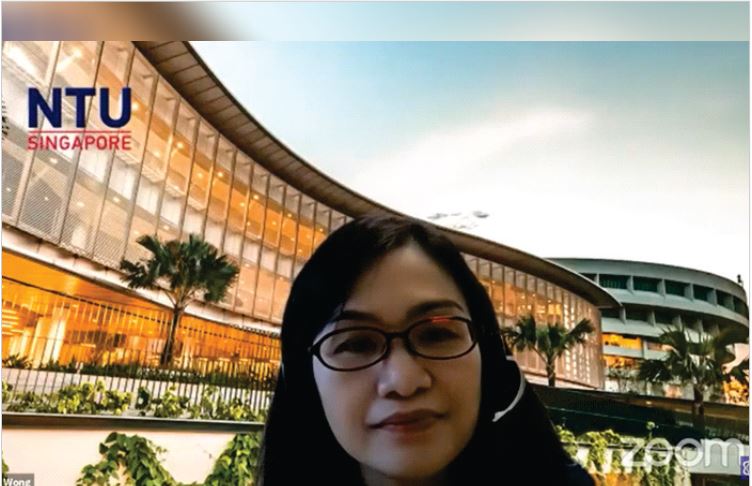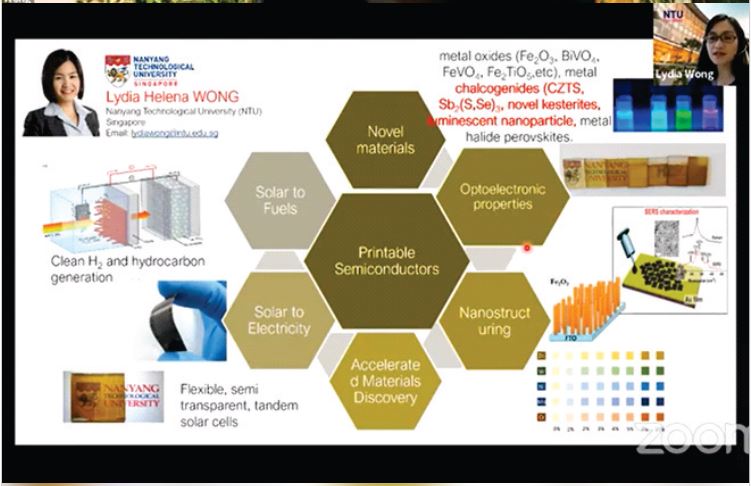
IPB University Physics Department Explores Research Collaboration with NTU Singapore
IPB University Physics Department Explores Research Collaboration with NTU Singapore
[22 May 2022] The Department of Physics, Faculty of Mathematics and Natural Sciences (FMIPA) IPB University conducted an exploration of research collaboration in the field of materials science with Nanyang Technological University (NTU) Singapore. NTU itself in 2021 is ranked first in the QS WUR ranking in the subject of material science, while in 2022 it ranks third under MIT and Stanford University.
One of the ways is by presenting Assoc Prof. Lydia Helena Wong from NTU in the 28th series of the IPB Physics Talk event, some time ago. Prof. Lydia is a prominent scientist in the field of material sciences with a number of publications of scopus 170, citations 7,726 and h-index 49. Prof. Lydia himself is an Indonesian Diaspora who currently serves as Managing Director I4 (Indonesian International Association of Scientists) for the Asian region Southeast.
In this activity, Prof. Lydia explained one of the research developments at NTU, namely: “Emerging Inorganic Materials for Solar Harvesting Devices”. In his presentation, he explained the development of solar cell technology and the latest developments in related research at NTU. Such as the use of new inorganic materials Kesterite and Antimony Sulfate, the fabrication and characterization of solar cells based on chalcogenides and chalcopyrite materials, the design of semi-transparent perovskite solar cells, and the use of iron oxide material as a photoanode for solar water splitting.
“Kesterite material (Cu2ZnSn(S,Se)4) has potential as a photo absorber with high efficiency. Some of the weaknesses of the material are difficulties in controlling the stability of the phase and composition,” he said. Prof. Lydia also explained the results of research related to water splitting which is the “holy grail” of green energy research. Namely sunlight is used to react water and carbon dioxide into oxygen and hydrogen to then store the hydrogen as a fuel (fuel cell). The semiconductors used in the water splitting process have almost the same characteristics as solar cells, such as Fe2O3, FeVO4, and Fe2TiO5 as photoanode and kesterite as photocathode.

In the discussion session, it was revealed that there are several similarities between the research that has been carried out by several lecturers in the Physics Department of IPB University with the research developed at the NTU School of Material Sciences and Engineering (NTU MSE). The similarities are in terms of both experimental and theoretical/computing.
“Research conducted by Physics lecturers related to the theory and modeling of solar cell design, fabrication of sterite-based solar cell materials, modeling and characterization of perovskite solar cells, as well as solar cells based on natural materials was also carried out (or could complement each other) with research conducted at NTU, “said the Head of the Physics Department of IPB University, Prof. Tony Sumaryada.
Prof. Tony also emphasized the need for the Physics Department of IPB University to welcome this opportunity to collaborate with NTU MSE. This can be done through research and education collaboration in the form of a Joint Research Consortium or a Graduate Student Research Exchange. In his response, Prof. Lydia H Wong welcomed the initiation of this collaboration. According to him, this is a form of dedication of the Indonesian Diaspora in improving the scientific performance of scientists and lecturers in Indonesia. (SY/Zul)



